Musical instruments of our nation are distinguished for richness and diversity. Many of them were made in ancient times and have been improved throughout the centuries. ‘Tambourine player stone’ near Gobustan rock paintings of 6000 years was used by our ancestors as a percussion instrument. Various musical instruments engraved on items found during archaeological excavations in Azerbaijan indicate to their antiquity. Governed by tangible cultural riches, works by our classic poets, booklets by music experts, miniatures by artists of Middle Ages, wall paintings, diaries of travellers having travelled our country, museum collections, we can say nearly 90 musical instruments have been used in Azerbaijan. They are divided into 5 groups according to the sound source, the basis of modern classification: string, wind, percussion, self sounding. In accordance with this classification, out of instruments distributed in Azerbaijan 32 (26 played with a mediator, 4 with a bow, 2 with switch) are string, 23 wind, 16 percussions, 17 self-sounding.
Tar, ‘the most important instrument for expansion of study of Eastern music’ to Uzeyir Hajibeyov, kamancha, which he considered ‘the most beautiful of melodic instruments’, saz, the ‘friend’ of ashygs,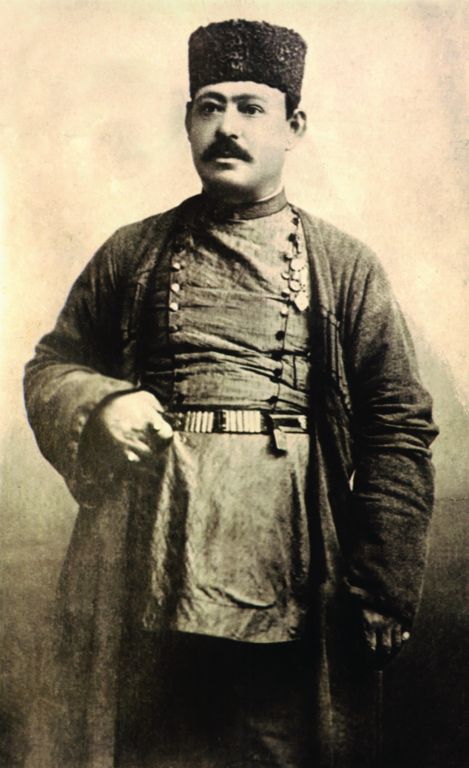 ganun that was compared with ‘box of secret’ by Fuzuli, oud, the ‘king’ of all instruments in due time, are most popular string instruments at present.
ganun that was compared with ‘box of secret’ by Fuzuli, oud, the ‘king’ of all instruments in due time, are most popular string instruments at present.
Tar, one of the most perfect instruments of Azeri nation, is played with the mediator. Tar is made of mulberry, walnut and pear trees, open side of the body is made of cattle heart membrane. Its strings are of different thickness and composition.
Tar that has passed through long development is mentioned in poems by Baba Tahir and Gatran Tabrizi of XI century. Capital improvement of tar is linked to the name of Mirza Sadyg Asad, the skilful tar player. Before him, tar had 5 strings. He added tune and ring strings, kept 22 frets, specified their place, clinched ‘inner arm’ to the body to reinforce tuning. Tar, which became lighter, was held not on the lap as before but on the chest. Thus, technical opportunities of tar were expanded. For a short time Mirza Asad’s tar got popularity beyond Azerbaijan under the name ‘Azerbaijani tar’.
Divided into big and small bowls, the body of tar reminds from the top of figure of eight. 22 frets are linked to its fingerboard. The instrument has 11 metal strings, which are called white (made of metal with steel mixture), yellow (bronze) and red (white strings covered with reddish or yellowy bronze string) strings. 2 double strings (white and yellow) in the very bottom are main strings since the sound of melody is produced by them. They are followed by tune strings consisted of double – red (sometimes yellow) and white (can be replaced by yellow too) strings, and above them, there is thick red – bass tune, tone string. Above tune strings, there are 2 couples of white ring strings. Main and ring strings are tied to 6 big tuning pegs on the top, while tune ones to small tuning pegs. Double white, yellow and ring strings have a permanent tune. 3 tune strings are tuned to various loudness respective of the mode of mugham or composition. During the performance, the mediator is used in different methods.
Kamancha of ancient times had a string, long fingerboard and foot. Now, it has 4 strings, third and fourth bass strings of which are covered with copper and bronze wires. Strings are played with a bow made of cornel tree in the form of the slightly bent switch and horsehair in the end. It consists of a ball-shaped bowl made of walnut tree basically, round fingerboard and iron billow called ‘spit’ that unites them and crosses through the bowl. Open side of bowl is covered with sturgeon skin. The stretcher is placed on that in the aslant position. One ends of strings based on the stretcher are tied to hooks on the spit, while other ends to tuning pegs on the upper side of the fingerboard.
Saz, the development of which is closely linked to the art of ashyg, is played with tazana (mediator). It is often mentioned in poems by classic poets and ashygs. Primitive saz had a small bowl and 2-3 strings. In the course of ashyg music, measures of saz were enlarged, the number of strings and frets increased. A pear-shaped deep bowl of saz is made of 9 mulberry tree strips. Its fingerboard is made of the walnut tree. Saz has kinds such as large or big (8-11 strings), medium (8-9 strings) and short (4-7 strings), armpit. 1500-mm, 12-string major large or mother saz was used in the near past. 17-18 and more frets are tied to its fingerboard. 3-4 lower strings are high-tone, 2-3 middle strings are bass and 2-4 upper strings are the accompaniment. High-tone and accompaniment strings have a permanent tune, while the tune of bass strings changes according to mode-harmony of composition.
Ganun is played on the lap by plucking the strings with two tortoise-shell picks, one in each hand, or by the fingernails. It was widely spread in the East, including Azerbaijan in due time. After being forgotten for some time, in the late 50s orchestras began playing it again. Ganun’s body is in the shape of a flat right-angled trapezium. The cover is made of wood mainly, has resonator holes on the surface. The lower part of the cover is coated with skin, on which wooden barrow is placed. 72 strings made of metal or kapron are stretched over the barrow. One ends of strings are tied to holes on the right-angeled side of the body, while other ends to wooden tuning pegs. Tuning the instrument, tuning pegs are screwed with a special key. One or two small metal barrows are placed near tuning pegs, under strings to change the tune of strings up to halftone or a tone and a half.

Ud, one of the ancient instruments played with a feather of an eagle, comes from ‘al-ud’, which is called ‘lyutnya’ by Russians, ‘laot’ by Germans, ‘lyuto’ by Italians. Till X century oud had 4 strings, later the fifth one was added and every string was doubled to make sound louder. Brought to Sicily and Spain first oud was spread in the whole of Europe in the Middle Ages. XVII – XVIII was a renaissance of oud, which gradually lost its popularity, giving up its place to violin, guitar. Only in the eastern countries, it kept superiority. Present oud consists of a pear-shaped bowl made of walnut tree slices (up to 20), short fret-free fingerboard and top hooked to the back. Resonator holes are made to assure good sound on wood. In the bottom of the cover, there is barrow to which strings are directly tied. It has 5 doubled strings. An additional string is tied sometimes. 1st and 2nd double strings are made of bowels, others of metal.
Dambur, 2-string instrument made of lime tree widespread in Zagatala and Balakan districts, has a scoop-shaped long body. 5 wooden frets are tied to the shorter fingerboard. Metal strings, which were made of silk before, are sounded with fingers.
String instruments played with mediator were more popular in the Middle Ages. According to Kitabi-Dede Gorgud, gopuz was the favorite instrument of ozans, ancestors of present ashygs. Gopuz with 2-3 strings was much alike saz. Berbetin was similar to oud and a bit larger. Tune of oud was the basis for tuning of other instruments. Gashgar lute and tenbur that are used now in Central Asia were popular in Azerbaijan. Tenbur had kinds such as dutar, setar, chartar, penjtar, sheshtar. Bowl of 3-string ozan, which was like hump tenbur, was covered with skin basically. Sheshkhana, invented by mugham singer Rzaeddin Shirvani, was much like oud. One of the instruments like oud was sheshtay and 8-9-string chekhes. Chang, widely used in Azerbaijan in the Middle Ages, was a favourite instrument of singers, musicians, poets. Beside chang with an arched body, triangular and quadrangle-shaped chang and nuzhet, which were sounded with special sticks, were used. Nuzhe and mughnu, invented by prominent music expert Safiaddin Urmavi, were used in Azerbaijan. Nuzhe was made in a base of chang and ganun. The quadrangle-shaped instrument had 81 strings. 33-string mughnu was much similar to a lute, but was larger. 96-string santur, with a body, consisted of the trapezium-like box and played with sticks, was used in Azerbaijan in the near past.
Among instruments played with a bow of horsehair, chegane, cheganag and keman were popular in Azerbaijan. Chegane, which had a pear-shaped bowl and 2 or 3 strings, was leaned on the floor by its stand. 3-string cheganag had a sieve-like bowl. Keman reminded of a violin.
Balaban, one of the ancient wind instruments our ancestors left to us, is played in all corners of Azerbaijan. Ksula is used in north and northwest Azerbaijan, yan pipe and tulum in Nakhchivan.
Zurna (Gara zurna as well), one of the most ancient instruments of our nation, had 5 kinds in Sheki region for a length of body and sound: main and medium-large, which is used now, small, medium and foot small.
Zurna is combined of the body (kotuk, karkhana), billow, key and reel. Body, made of dry apricot tree, has 8 music holes on the surface and 1 on the back. The diameter of the body gets the shape of cone enlarging from the 6th hole. Hole in the wide foot is always open. Forked ‘tongs’ made of wild willow is placed in the body from the top. Billow made of bronze and copper is linked to that. Cane ‘key’ is tied to the bottom end of the billow. Round ‘reel’ made of mother-of-pearl or bone is connected to the billow. During the performance, lip touches that. After the performance, the key is capped.
The diameter of the body gets the shape of cone enlarging from the 6th hole. Hole in the wide foot is always open. Forked ‘tongs’ made of wild willow is placed in the body from the top. Billow made of bronze and copper is linked to that. Cane ‘key’ is tied to the bottom end of the billow. Round ‘reel’ made of mother-of-pearl or bone is connected to the billow. During the performance, lip touches that. After the performance, the key is capped.
Balaban, which is often called also yasti (flat) balaban for the flat mouthpiece and soft sound, consists of a body made of the apricot tree, cane, barrow and cover. The body has 8 holes on the surface and 1 on the back in the middle of 1st and 2nd holes (sound fret) on the surface.
Fife is made of cane basically. The lower end of cylindric body (280-350 mm in length, 20 mm in diameter) is a bit hewed, the head is cut aslant and wood is placed inside. On the surface of the head, there is a quadratic hole with a metal ring to adjust the sound. The body has 7 holes on the surface and 1 on the back.
Ney, consisted of straight cylindric, empty body, is made of the apricot tree, date-palm or copper. To assure good sound the upper end of the instrument is a bit chewed. The body has 5-7 music holes on the lower surface and 1 on the back towards the top.
Shield accordion (more famous as Azerbaijani or Eastern accordion) and clarinet are widely used by musicians.
Wind instruments that were popular in Azerbaijan in Middle Ages include burghu, long instrument expanded towards the bottom, bugh, short with a pretty large top, musigar, consisted of 8 pipes of different length, kerenayi, 2m in length, expanded towards the bottom, nefir, a horn instrument consisted of long, straight tube and with a bit large top, gavdum with a wrapped pipe, shahnefir, the bend kind of nefir, mizmar, similar to fife, nay with a sharp sound. Erghan, the ancestor of a modern organ, was made of numerous tubes and played with bellows. Sumsu, the primitive type of fife, sumsu-balaban, bird-like burbugh and kelenay (kelezurna) were used in the near past. Shapbyr-balaban is rarely played now.
Gaval, which was called ‘the most delicate’ of percussion instruments by Uzeyir Haibeyov, naghara, goshanaghara, dumbek are very popular at present.
Gaval consists of the narrow, round wooden rim. One side of gaval is open, another side covered with fish skin. Metal rings are fastened to the rim from inside. Diameter is 340-456 mm, width 40-50 mm. Gaval is played by touching palms and fingers of both hands on the side or centre of the skin surface, also shaking the instrument.
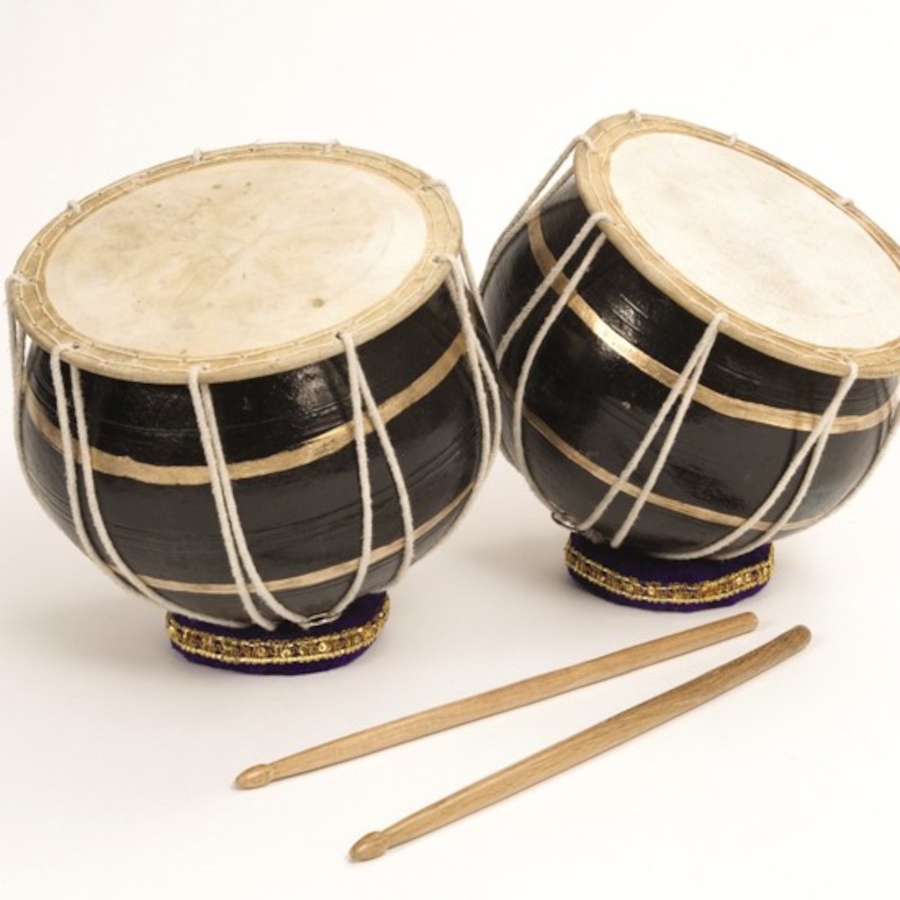
Naghara, made of apricot, walnut, mulberry and lime trees, has a cylinder-like frame. Steel hoop covered with goatskin is stretched to both sides by crosswise revolved rope. According to the size of the body, it has various names such as kos, the big one played with a small type, goltug, manual naghara, bala naghara. Big naghara is played with 2 beetles, others by hand and sticks.
Goshanaghara (dumbul, dumbelek as well) is comprised of the body made of 2 walnut, mulberry trees of the same height, but different size and metal. It reminds of the cup. The skin of goat, camel or horse covered on the surface of the body is stretched by a screw mechanism. Different sounds are obtained by touching sticks separately on both surfaces, on one surface (centre and side), on each other or on the body, touching the palm on the surface.
The cup-shaped body of dumbey was made of clay before, now of wood basically, the wide surface is covered with goatskin and stretched by strap or screw mechanism. Height of the instrument, which is played like gaval, is 350-400 mm.
Drum, the cup-like instrument played with sticks, was popular in middle ages. Body was made of copper or bronze, open side coated with wolfskin. Its small type used in hunting was called drum-bass. Kus, larger than drum, was played via sticks with crooked ends or covered with cloth. Consisted of 2 big drums, juft-kos was played in battles usually. Tambourine was similar to modern gaval. 4-6 copper circles were fastened along its rim. Sometimes circles were replaced with small rings tied to external and internal sides of rim. This instrument was called circle. Mezher had a wide rim to which rings, bells were fastened. Davul, mentioned in Kitabi-Dede Gorgud epos, reminded of big naghara. Diameter of body of tebire was diminished towards the middle. Both sides of dumbul’s rim were broad. Nagharazan was similar to one-sided naghara, duhul like longish naghara.
Self-sounding instruments shakhshakh, kaman, lagguti. Shakhshakh (chalpara) consists of 2 wooden round plates (bowl) tied via string to the top of handle. Shaking the instrument by handle, they sound touching each other. The 400-mm wooden part of kaman is crooked like a bow. Metal plates, rings and bells are fastened to its entry made of string, their ends are linked to the ends of the stick. By shaking yallibashy and striking blows on that rhythm of dance is kept. Lagguti consists of 2 wooden flat beams different in size. Deep resonator cracks have been hewed along their long side. 2 sticks are used to play the instrument.
Instruments such as sinj, deray (in military marches basically), jeres (during migration, by dancers), bracelet-like khelkhal (by dancers), zeng, gymro, kase, aghyz-gopuzu, zyngyrov, chan, tesht, safail, gashyghek, zil have been used in Azerbaijan.
Our traditional musical instruments form different musician bands. Sazende, the mugham ‘trio’ of singer, playing gaval, tar player and kaman player, bands of saz player girls playing small saz, ashygs, naghara and zurna players, balaban players, dambur players, tulum players, naghara players were very popular.
Our composers have a concert, sonata, piece and other works for tar, kaman, saz, ganun, balaban, zurna.
Mejnun Kerimov, the candidate of art study, Honor Artist, has carried out large-scale studies to restore the instruments neglected and include them in ensembles again. A number of instruments such as rud, lute, berbet, cheng, gopuz, choghur, cheghane, Shirvan’s tenbur, santur, nuzhe have already been restored. Candidate of art study Abbasgulu Najafov has also joined this mission. An ensemble has been formed of the musical instruments restored.
|
Impact instruments |
||
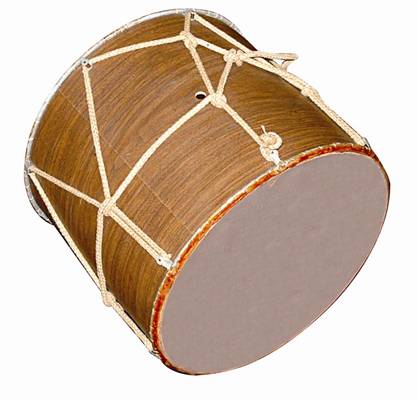 |
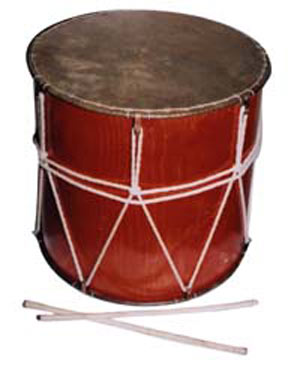 |
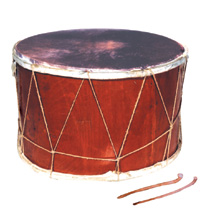 |
| Armpit drum | Small drum | Big drum (Kos) |
 |
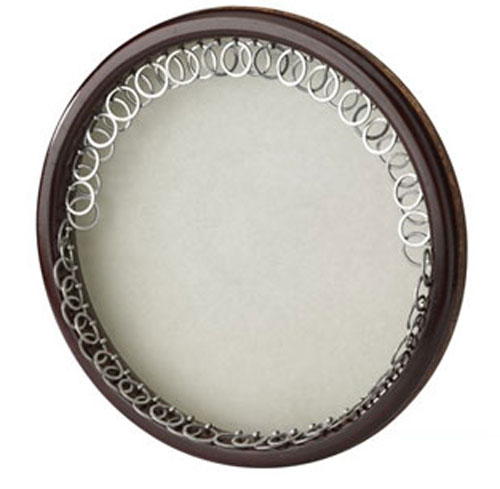 |
 |
| Double drum | Tambourine | Drum |
 |
 |
|
| Laggutu drum | Dumbek drum | |
|
Wind instruments |
||
 |
 |
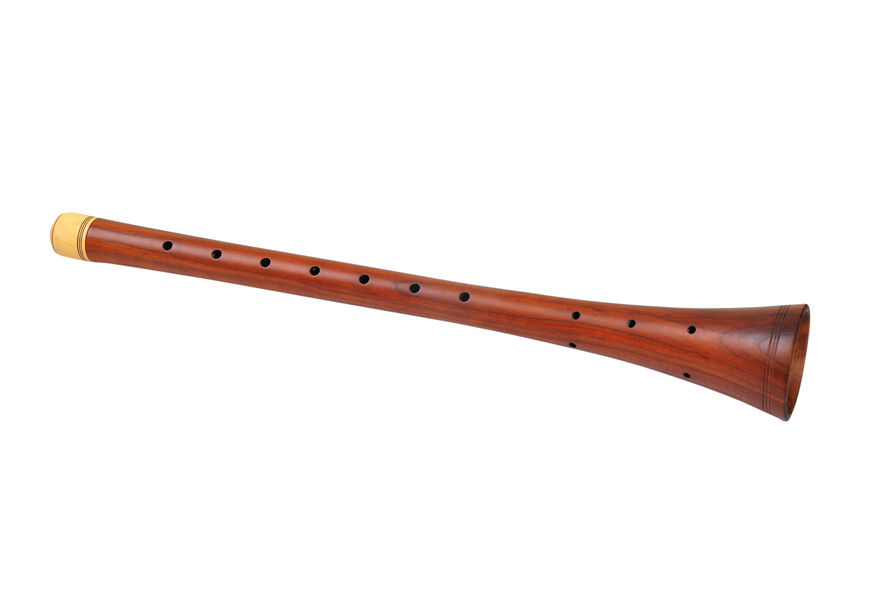 |
| Ney-flute | Balaban | Zourna |
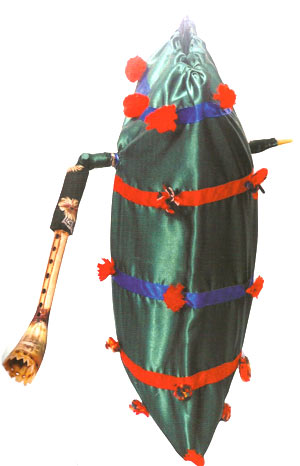 |
 |
 |
| Tulum | Pipe | Garmon |
|
Stringed instruments |
||
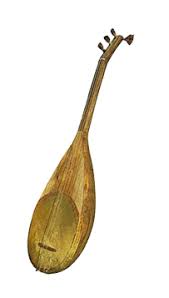 |
.jpg) |
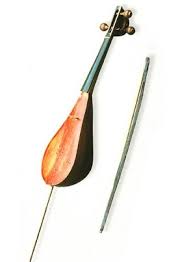 |
| Gobuz | Choghur | Chegane |
.jpg) |
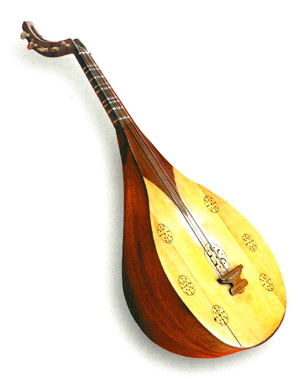 |
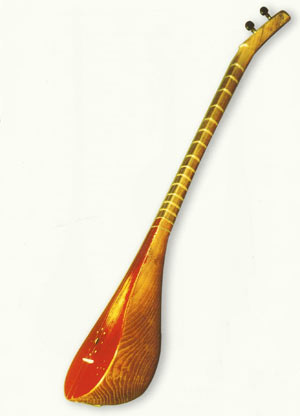 |
| Lute | Berbet | Shirvan tenbur |
 |
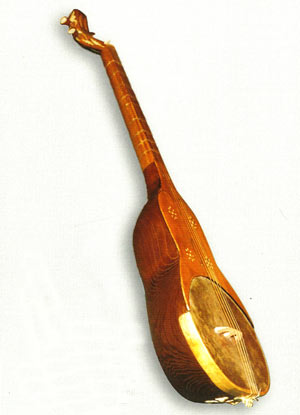 |
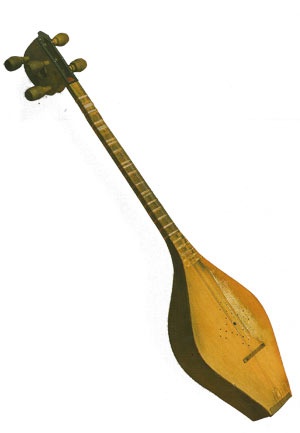 |
| Sentur | Cheng | Rud |
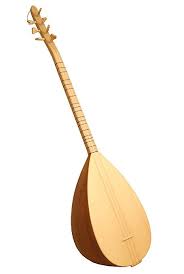 |
 |
 |
| Saz | Tar | Kamancha |
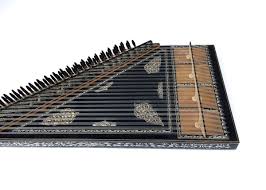 |
 |
|
| Canon | Ud | |



